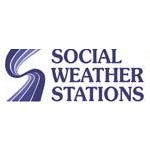
The survey, conducted from May 24 to 27 and first published in Business World, showed that the number of jobless adults fell from 34.4 percent in March to 26.6 percent this May.
However, data from SWS also showed that unemployment remained above 15 percent since August 2004.
The survey also showed that respondents’ opinions were split regarding the the availability of jobs in the next 12 months.
Unemployment figures included those who were retrenched (from 13 percent to 11 percent), resigned from their jobs (from 15 percent to 10 percent), or first time jobseekers (from 6 percent to 5 percent).
The SWS definition of unemployment covers respondents aged 18 and above who are “without a current job and looking for a job.” This excludes those not looking for work such as housewives, students and retired or disabled persons.
This definition is different from the official definition of the National Statistical Coordination Board which covers all persons who are 15 years and over and are reported as: Without work and currently available for work and seeking work; or without work and currently available for work but not seeking work.
The government’s own Labor Force Survey (LFS) in April showed an unemployment rate of 6.9 percent, slightly down from the 7.2 percent recorded the previous year.
Unemployment, according to SWS, remained relatively higher among women (from 43 percent in March to 36.4 in May) than among men (from 27.6 percent to 18.9 percent).
By age group, joblessness was highest among those in the 18 to 24 age range (from 55.8 percent to 50 percent).
The survey also showed that unemployment dropped sharply among those aged 25 to 34 (from 45.4 percent to 31.2 percent) and those at least 45 years old (from 30.8 percent to 21.3 percent).
It remained almost unchanged for those among aged 35 to 44 (from 21.7 percent to 22.1 percent).
SWS noted that 29 percent of the respondents expect more jobs, 31 percent of the respondents believed the number of available jobs would not change in the same period, while another 29 percent said they expect fewer jobs in the coming year.
The survey used face-to-face interviews with 1,200 adults nationwide, and had an error margin of plus-or-minus three percentage points for national percentages.